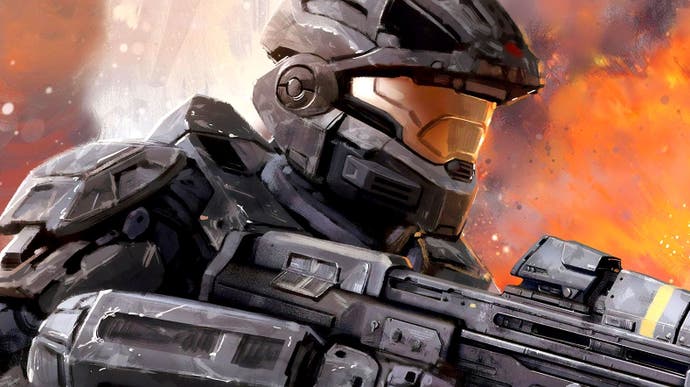Halo: Reach's remaster is OK - but key improvements are required
PC and Xbox One versions of the Master Chief Collection remaster analysed in depth.
This week's arrival of Halo: Reach on Xbox One, Windows Store and Steam is a highly significant release. Nine years after its Xbox 360 debut, it has finally been added to the Master Chief Collection with all last-gen Bungie and 343 titles now available to Xbox One users. It's also available on PC as part of a scheduled, episodic roll-out of Halo titles - and it's the first full franchise release to hit the platform since 2004. It's a big deal then, but how does it improve on the original and are there any problems with the conversion?
I've been really looking forward to this, simply because as the final Bungie release in the series, Reach is simply an incredible game that's just as brilliant to play today. Its single-player component is deeply evocative of everything that made Halo: Combat Evolved a milestone achievement. There's that sense of ambience and enchantment from its beautifully designed alien structures and the sheer scale of its outdoor environments. Then there's its incredible soundtrack, of course - and all before we consider the actual gameplay mechanics, which still feel superb. It's Bungie at the top of its game and it's frankly unmissable.
So how can we improve on such a wonderful piece of work? Well, the increased processing power of today's hardware gives us plenty of avenues for an even better Reach experience. The first and most immediate difference in the remaster is the frame-rate. The inconsistent and often chugging performance level of the Xbox 360 release was eventually cleaned up to a nigh-on locked 30fps via its back-compat release but this new port goes the extra mile, targeting 60fps instead. On PC, you can technically go higher, but the situation is somewhat complex there - and I'm not sure going beyond 60 is actually a good idea.
Thankfully, at 60fps at least, animation works beautifully - perfectly synchronised with the target frame-rate - but there are some caveats. The first would be the camera movement in cutscenes: more often than not it is 60fps, but sometimes it can stutter. Motion seems to be running out of step with the refresh rate in some scenarios - so while the renderer updates (as registered by our frame-rate analysis tools), actual movement can lag behind. It looks odd and hints at further issues to come for PC users.
Beyond frame-rate, the next big upgrade is resolution. Reach originally operated at a sub-HD 1152x720, using a very early form of temporal super-sampling anti-ailasing that gave 2x SSAA in static scenes but exhibited egregious ghosting in motion. Pixel-counts are boosted to 1080p on Xbox One and full 4K on Xbox One X, backed up by a simple post-process AA solution that seems to have issues on edge-smoothing anything other than static detail. Of course, PC lets you run at any resolution you desire, though 21:9 resolutions see more limited support in cutscenes (don't worry too much though - gameplay is fine).
The added clarity allows us to finally appreciate so many of the details in Halo: Reach's texture work - some of which are of a surprisingly high resolution. There is a little inconsistency here as some of the art is very definitely of its era, but that is the nature of the beast of playing an older game at a higher resolution than originally intended. Overall, you get to see so much more and combined with the quality of the design, Reach looks fantastic. That said, the way that detail is resolved into the distance depends on the version of the game you are playing. For example, texture filtering is low by default and can only be resolved on PC via forcing higher levels of anisotropic filtering in the GPU control panel.
PC users also have access to an enhanced graphics mode, which dramatically increases the distance at which models load in and pushes out LODs significantly. This really changes up so many areas of the game: some of the more aggressive LODs designed to maintain performance on Xbox 360 are irrelevant on today's PC hardware and the Reach port removes this compromise from the equation. It's just a shame that the Xbox One versions do not follow suit. Textures and models are not the only things that look better in the new versions of Reach: other aspects like water deformation physics also get a boost.
However, there are some differences that perhaps shouldn't be there - especially in the post-process pipeline. Effects like ambient occlusion, bloom, depth of field, film grain and motion blur seem to adjust based on resolution. So, for example, the depth of field effect meant to blur with a width of, say, 10 pixels at sub-720p now blurs with the same width of 10 pixels at 4K instead, inherently lessening and compromising the intended effect. In short, the higher the resolution of the remaster, the less impactful the post-process effects are - and I really hope that this is addressed. Additionally, motion blur wasn't particularly well implemented in Reach on Xbox 360, but I'm a little disappointed to see that rather than fix it for the Master Chief Collection, it's seemingly been removed altogether.
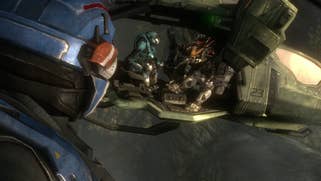
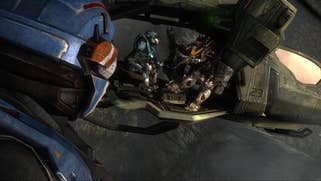

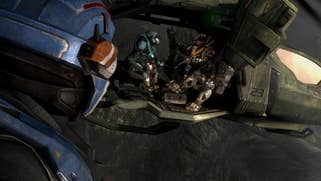

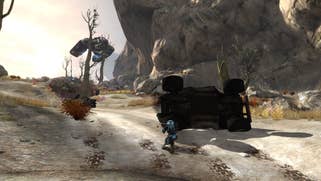



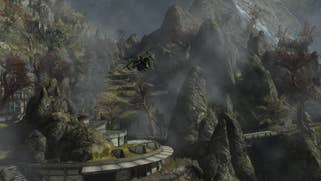


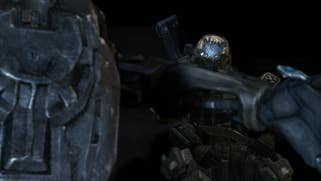
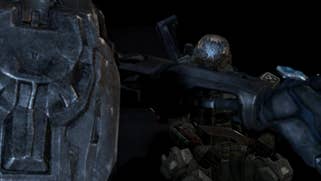
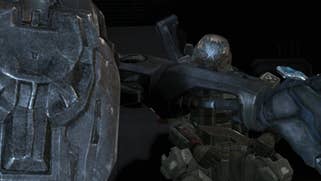
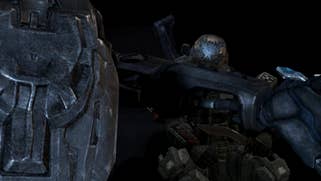
I do have some other concerns about the Reach port - the most obvious being that some of the changes to audio result in a game that doesn't sound as good as it should. I noticed it rather quickly with something not feeling right with how guns sound when firing and how they are mixed into the game. Gunshots are muffled and seem to have a different amount of reverb compared to the original game - and the overall sense is that Reach simply doesn't sound like the original release. And if you watch the video embedded on this page, maybe you'll agree with me that it actually sounds worse.
Performance-wise, things aren't quite as they should be either. We put Xbox One S and Xbox One X side-by-side by using online co-op, where the six teraflop GPU in the enhanced machine does a pretty good job of maintaining 60fps, with most of the drops coming from streaming in new areas. Hitches and stutters manifest, which are fairly infrequent and not really a big deal. You get drops into the mid-50s that seem to clear up fairly quickly, but it's interesting to note that in big firefights, the X can still drop frames.
In these exact scenes the Xbox One S is doing much worse, dropping into the middle 40s and maintaining sub-60fps frame-rates long into these sequences - performance here just isn't hitting the target, something that occurs often on the S. In some scenes, I noted a like-for-like increase of around 20 per cent in X performance compared to the vanilla unit, which sits on top of the 4x increase to resolution. I suspect that the 31 per cent increase to CPU clocks on the X may be a crucial factor in ironing out many of the S's performance problems.
PC-wise, I'd say that achieving a near-flawless 60fps is eminently achievable on just about any gaming PC - as you might imagine when recommended specs for 4K gameplay are nothing more than an Nvidia GTX 770. The only really bumps in the frame-time you see on most PCs will be a one frame drop when the game hits a checkpoint and saves - that is it, otherwise it's pretty much perfect.
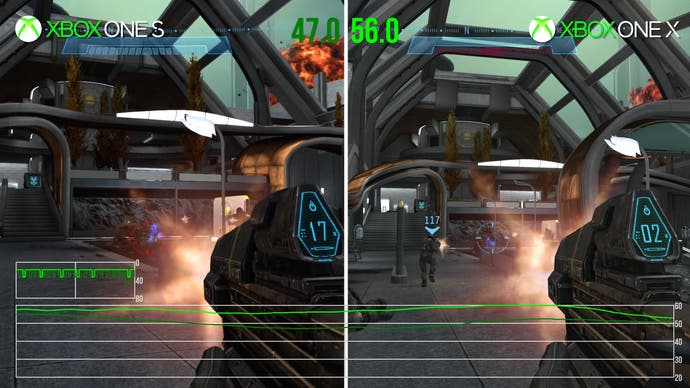
Moving beyond 60fps is problematic, however, and doesn't really work as it should. As far as I can tell, all game animations max out at 60fps, so if you're running at 120fps, for example, animation only updates every other frame. Mouse movement and LOD culling seem to be the only aspects of the game that do actually operate above 60fps and even then, these aspects don't seem to update in sync with the rendering, creating an uneven pacing of movement and looking jittery in motion. You will get better input latency, but it will not be linear or correct - and in my opinion this non-linear motion looks worse than properly paced motion at 60fps. This is a bit of an issue when the game runs so well on so many different rigs and is capable of so much more - yes, you can technically run the game unlocked but in reality, only 60fps actually looks decent.
In summary, I'd say that there's a solid base here but Reach requires a fair amount of work to get the remaster into a really good place. First of all, the post-process pipeline should scale correctly with resolution as opposed to diminishing in effectiveness the higher you push the pixel count. I'd also like to see motion blur restored and improved in quality, along with an in-game toggle for players that would prefer not to use it. Next up, audio doesn't sound correct - I was really surprised to hear effects that are more muffled than the original Xbox 360 release.
Then there's performance, which also needs a push. In prior Master Chief Collection releases on Xbox One, we've seen improvements to frame-rate arrive over time with a tighter lock to 60 frames per second - and I really hope that the developers can revisit Reach to iron out the stutters and skips, and generally improve the turnout on both X and especially S consoles. PC runs beautifully at 60fps but I'd describe the experience on anything above that as completely broken. It needs a rethink.
In summary, as a PC gamer primarily, I do appreciate this release. The quality of the game itself is - and has always been - absolutely fantastic, and the chance to experience it at 60fps with a high resolution is a real treat. But it really needs to be better - the legacy of Halo, the quality of Reach itself and the potential from a remaster practically demands it. Preserving games for the future - especially on PC - means replicating them as they were in all the places where it matters, while improving them at the same time based on the scalability of today's hardware and beyond. Perhaps this may sound overly harsh in some respects, but this is the Halo remaster that will persist for years or even decades to come - and while the foundation is solid overall, there are clearly issues here that need attention.
